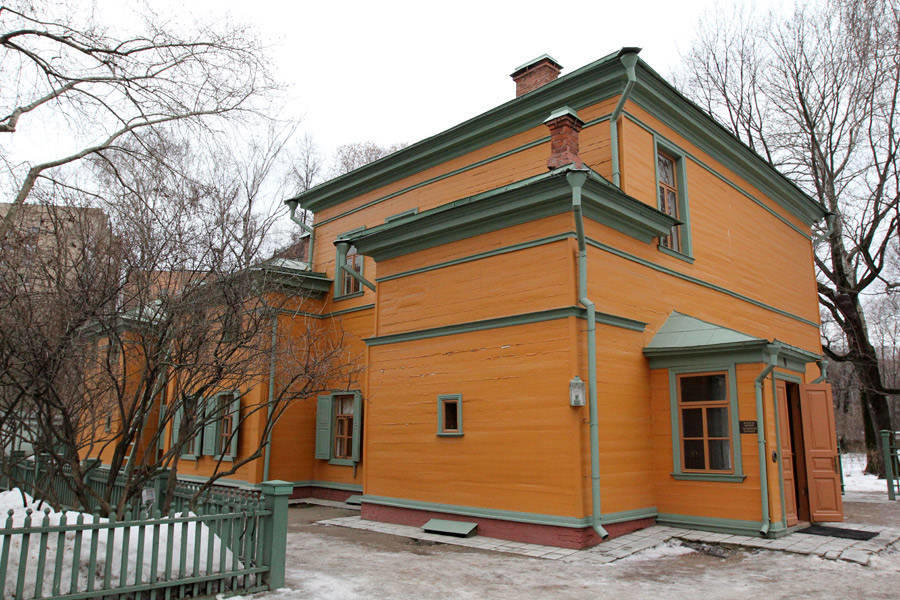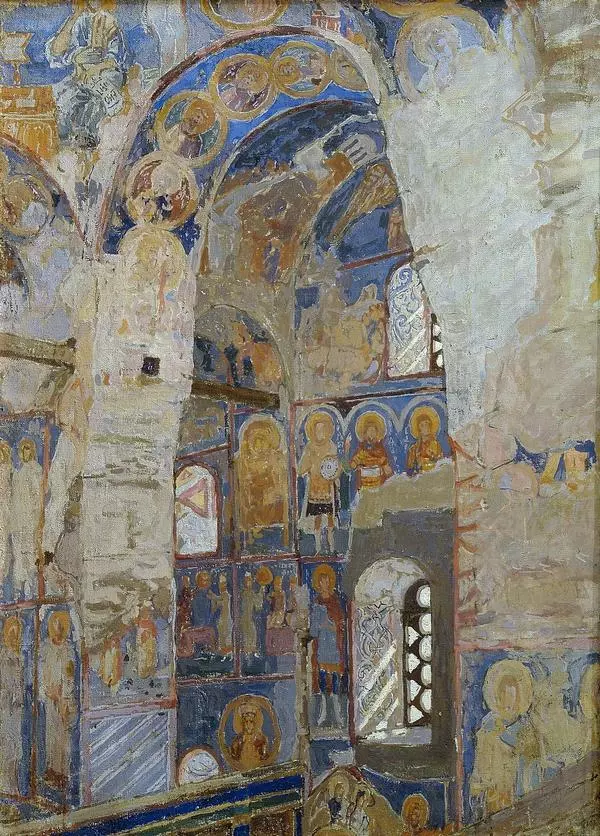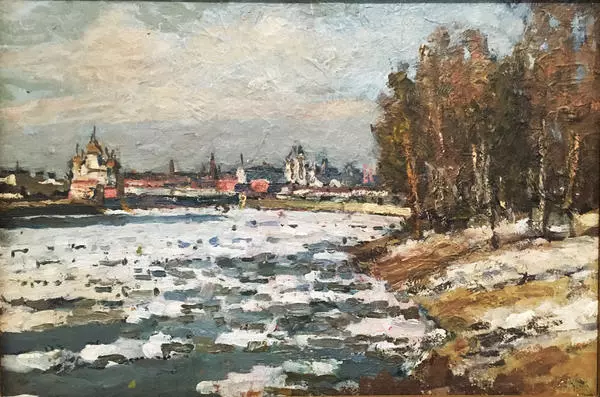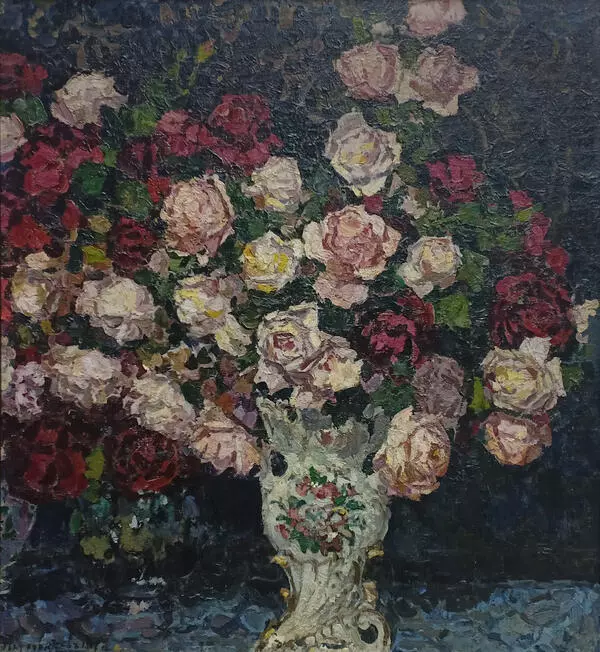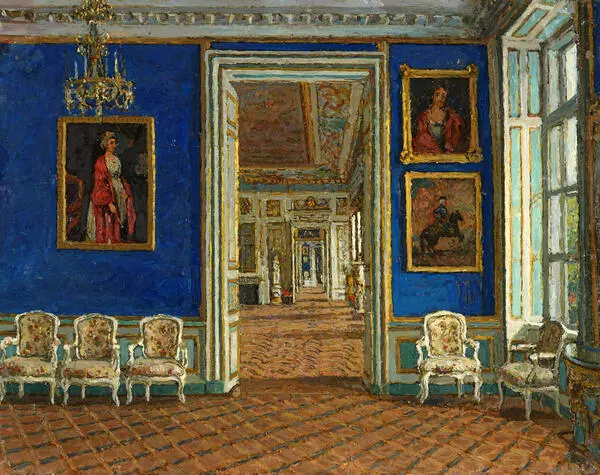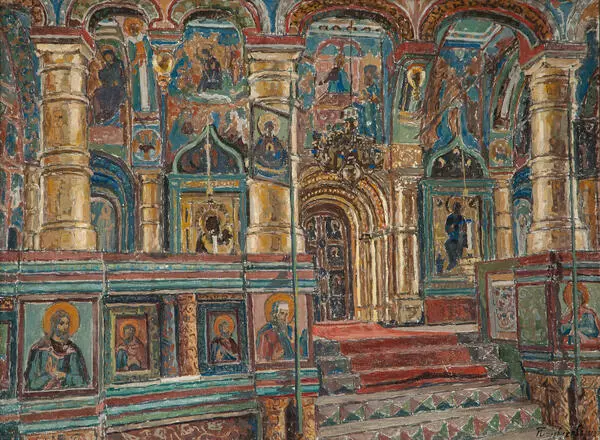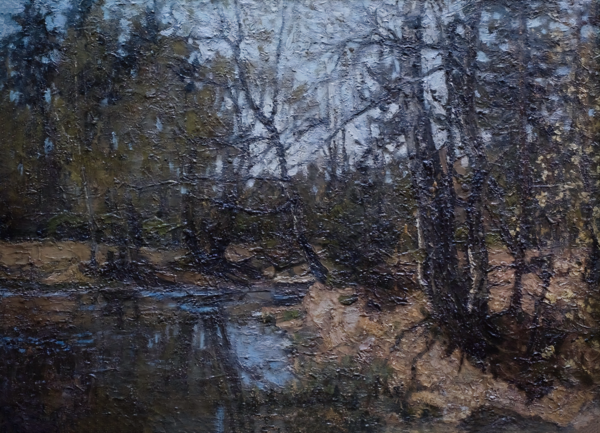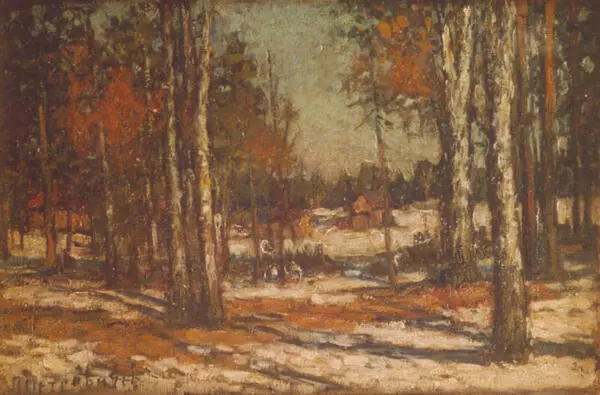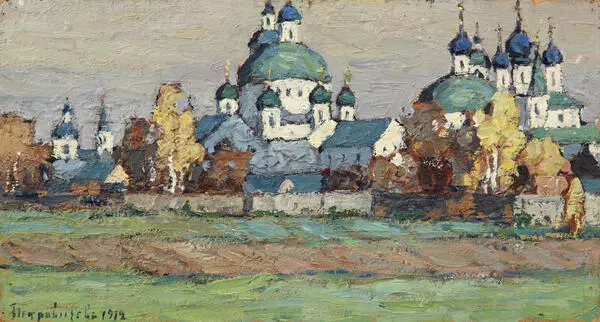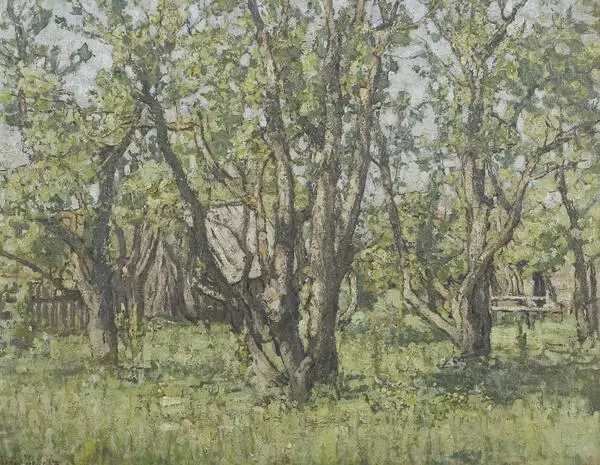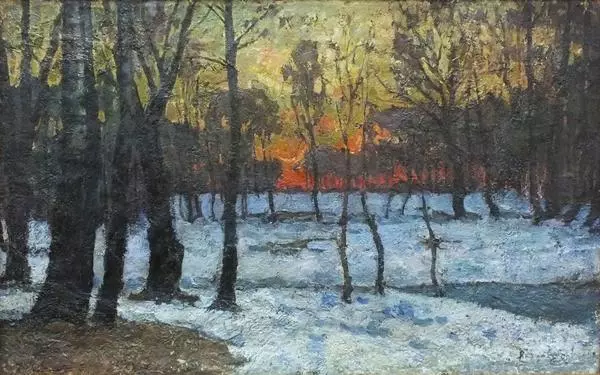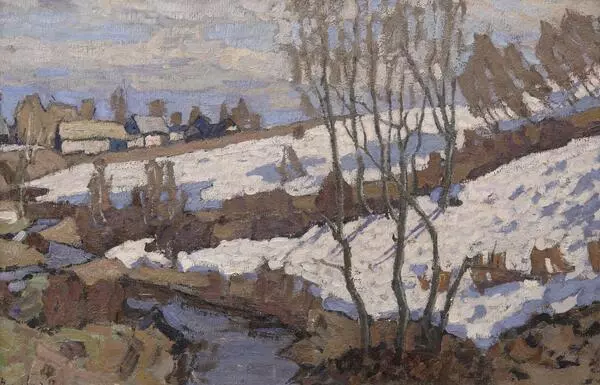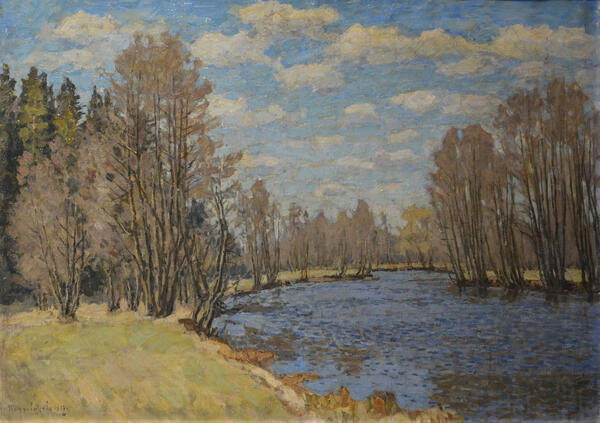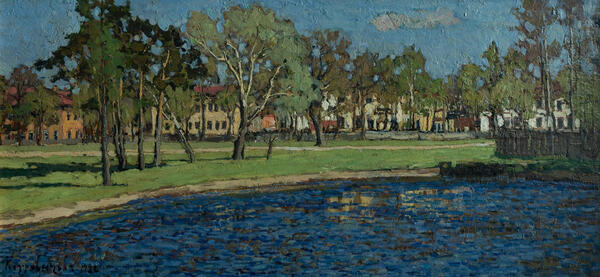The small two-storey mansion in Dolgo-Khamovnichesky (or Big Khamovnichesky) lane with a green roof and a small porch, depicted in the picture, was built in 1805. The wooden mansion survived the major conflagration during the Great Patriotic War [of 1812 with Napoleon] and was purchased by the writer Leo Tolstoy in 1882. The Russian classic particularly liked the mansion because it resembled a village house more than a town dwelling and he was also very impressed by the spacious garden.
1 / 3
The Mansion of Leo Tolstoy in Khamovniki
Creation period
1918
Dimensions
30,5x45,5 cm
Technique
canvas, oil
Collection
6
Open in app#1

Pyotr Petrovichev
The Mansion of Leo Tolstoy in Khamovniki
#2
#8
The mansion in Khamovniki became home to Tolstoy and his family for almost 20 years. It was here that the writer created more than 100 works: ‘The Death of Ivan Ilyich’, ‘The Kreutzer Sonata’, ‘The Resurrection’ and a number of plays including ‘The Fruits of Enlightenment’, ‘The Power of Darkness’, ‘The Living Corpse’ and many others. Here in Khamovniki, Tolstoy also wrote ‘My Reply to the Holy Synod’ when he was excommunicated from the church.
#5
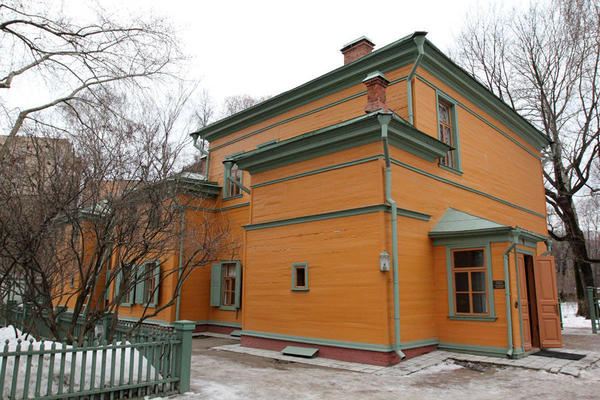
Pyotr Petrovichev created the painting presented in the exposition in 1918, before the Tolstoy family sold the house to the Moscow City Council.
#6
Pyotr Petrovichev was born in 1874 in the village of Vysokovo, the Rostov region, the Yaroslavl Province. He began to draw in his early childhood and studied at the Rostov Museum of Church Antiquities. While there, he got acquainted with Vassily Vereshchagin who appreciated the young artist’s abilities recommending him to go to Moscow to continue his vocational training. Petrovichev followed the famous painter’s advice and enrolled at the Moscow School of Painting, Sculpture and Architecture, where his teachers were Valentin Serov, Isaac Levitan and other recognised masters. Levitan often held him as an example for the other students: ‘Look at my staff and look at Petrovichev’s – I came, I saw and I was amazed.’
#7
Petrovichev’s career developed successfully in Moscow. He joined the Association of Itinerant Art Exhibitions, took part in the expositions of the Itinerant Artists, and successfully held his first personal exhibition in 1917. Not only private collectors, but museums as well started to buy the artist’s paintings.
#9
Petrovichev extensively traveled in Russia preferring to paint estates, indoor scenes, parks and gardens. He painted the mansions of Fyodor Tyutchev, Pyotr Tchaikovsky and Leo Tolstoy, of course. Petrovichev took up teaching in 1937, and, for several years, his house was filled with students. During the Great Patriotic War [of 1941-45] the artist took part in the defense of Moscow, doing night duty, digging ditches and building obstacles. He would refuse to go down to the shelter during the bombings, as he did not want to part with his paintings, which he bonded with like with children, according to his wife’s memories.
#10
Pyotr Petrovichev died in 1947 and was buried at the Vagankovskoye cemetery.
read morehide
00:00
00:00
1x
The Mansion of Leo Tolstoy in Khamovniki
Creation period
1918
Dimensions
30,5x45,5 cm
Technique
canvas, oil
Collection
6
Open in app
Share
